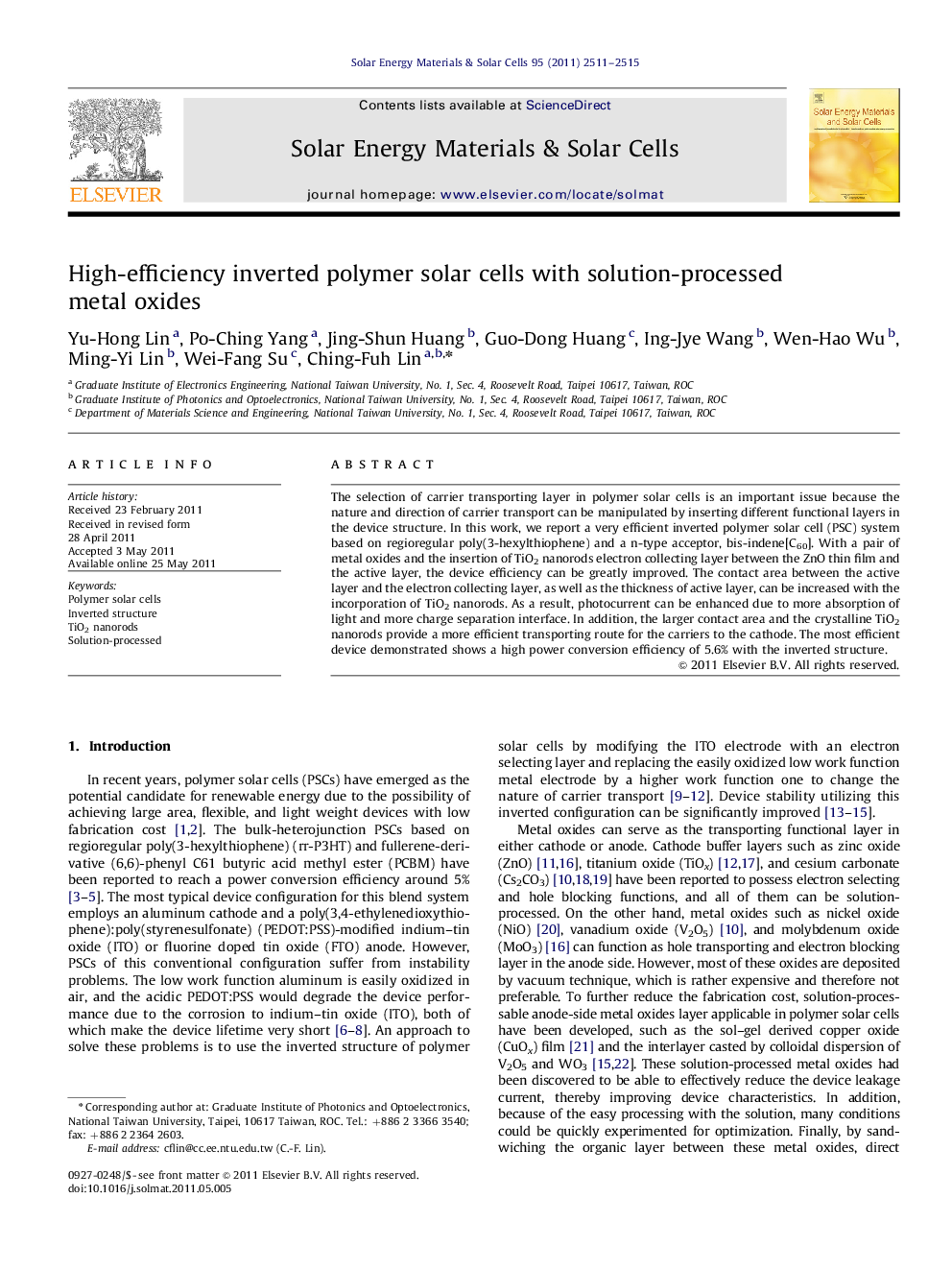| Article ID | Journal | Published Year | Pages | File Type |
|---|---|---|---|---|
| 78814 | Solar Energy Materials and Solar Cells | 2011 | 5 Pages |
The selection of carrier transporting layer in polymer solar cells is an important issue because the nature and direction of carrier transport can be manipulated by inserting different functional layers in the device structure. In this work, we report a very efficient inverted polymer solar cell (PSC) system based on regioregular poly(3-hexylthiophene) and a n-type acceptor, bis-indene[C60]. With a pair of metal oxides and the insertion of TiO2 nanorods electron collecting layer between the ZnO thin film and the active layer, the device efficiency can be greatly improved. The contact area between the active layer and the electron collecting layer, as well as the thickness of active layer, can be increased with the incorporation of TiO2 nanorods. As a result, photocurrent can be enhanced due to more absorption of light and more charge separation interface. In addition, the larger contact area and the crystalline TiO2 nanorods provide a more efficient transporting route for the carriers to the cathode. The most efficient device demonstrated shows a high power conversion efficiency of 5.6% with the inverted structure.
Graphical abstractFigure optionsDownload full-size imageDownload as PowerPoint slideHighlights► Commercialized poly(3-hexylthiophene) and bis-indene[C60] system as active layer. ► Inverted device structure fabricated via solution-processed method. ► Solution-processable nickel oxide interlayer for anode modification. ► Incorporation of crystalline TiO2 nanorods interlayer improving device performance. ► Device of optimized TiO2 concentration yielding a 5.6% power conversion efficiency.
